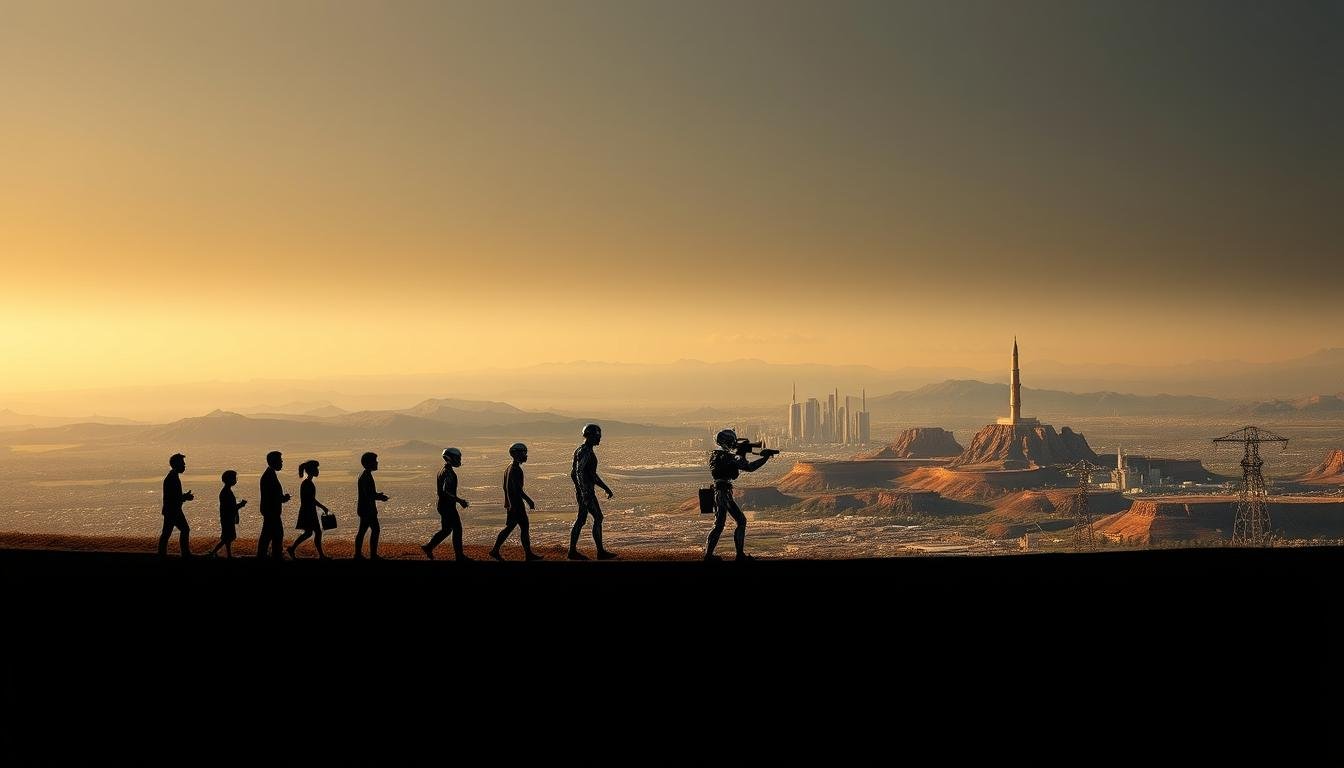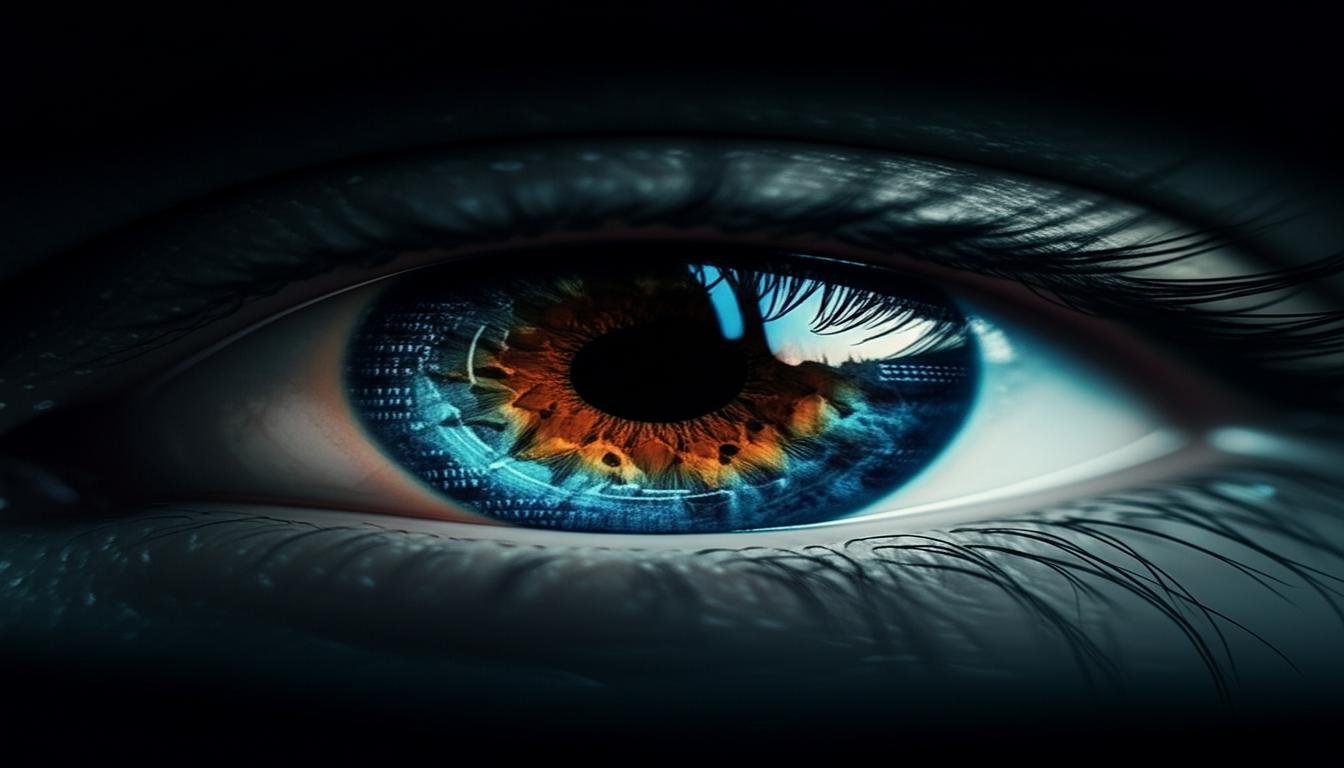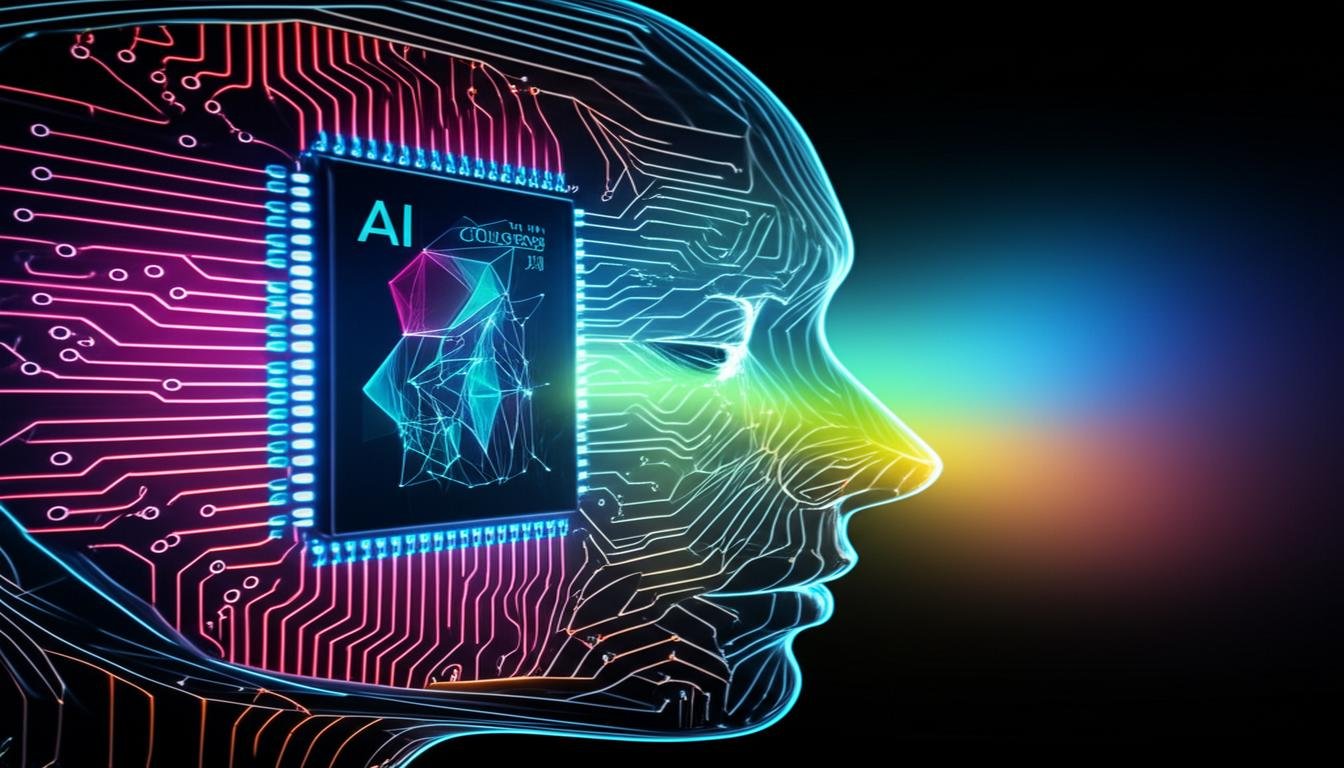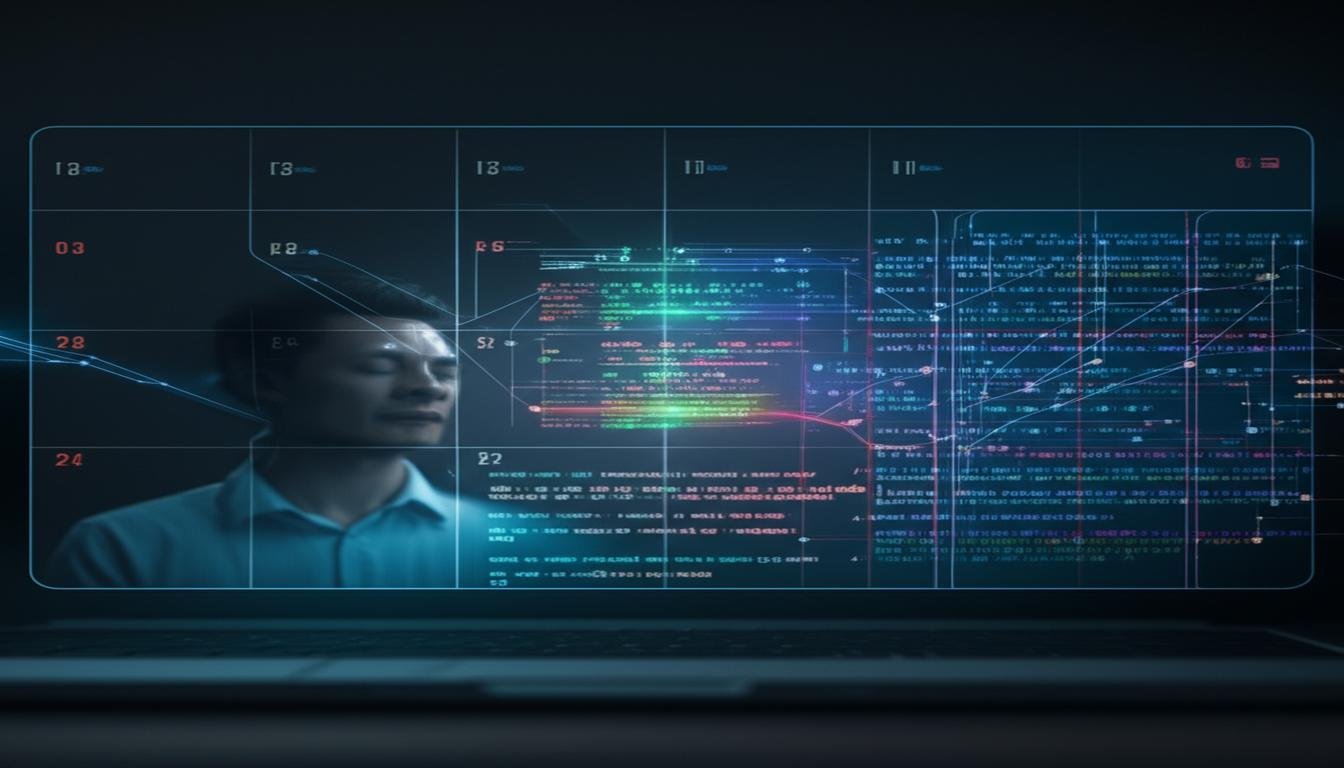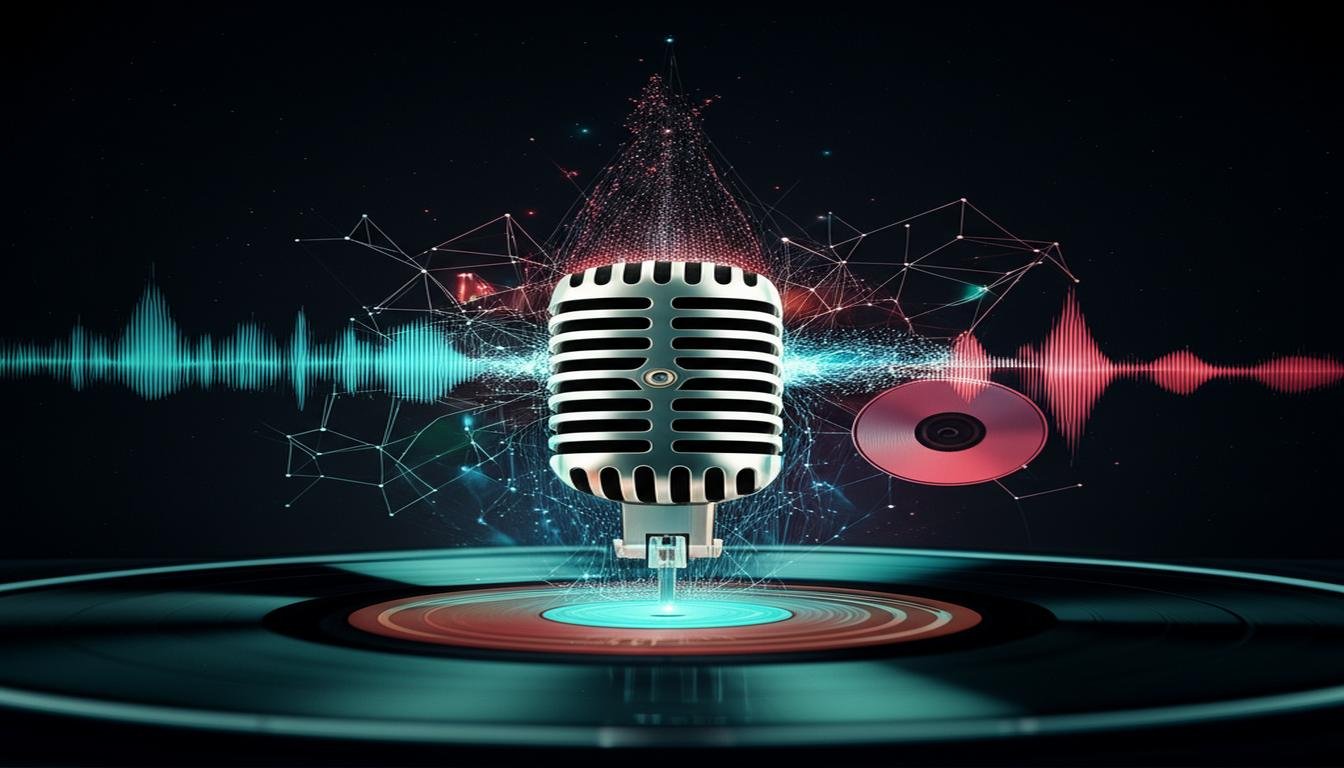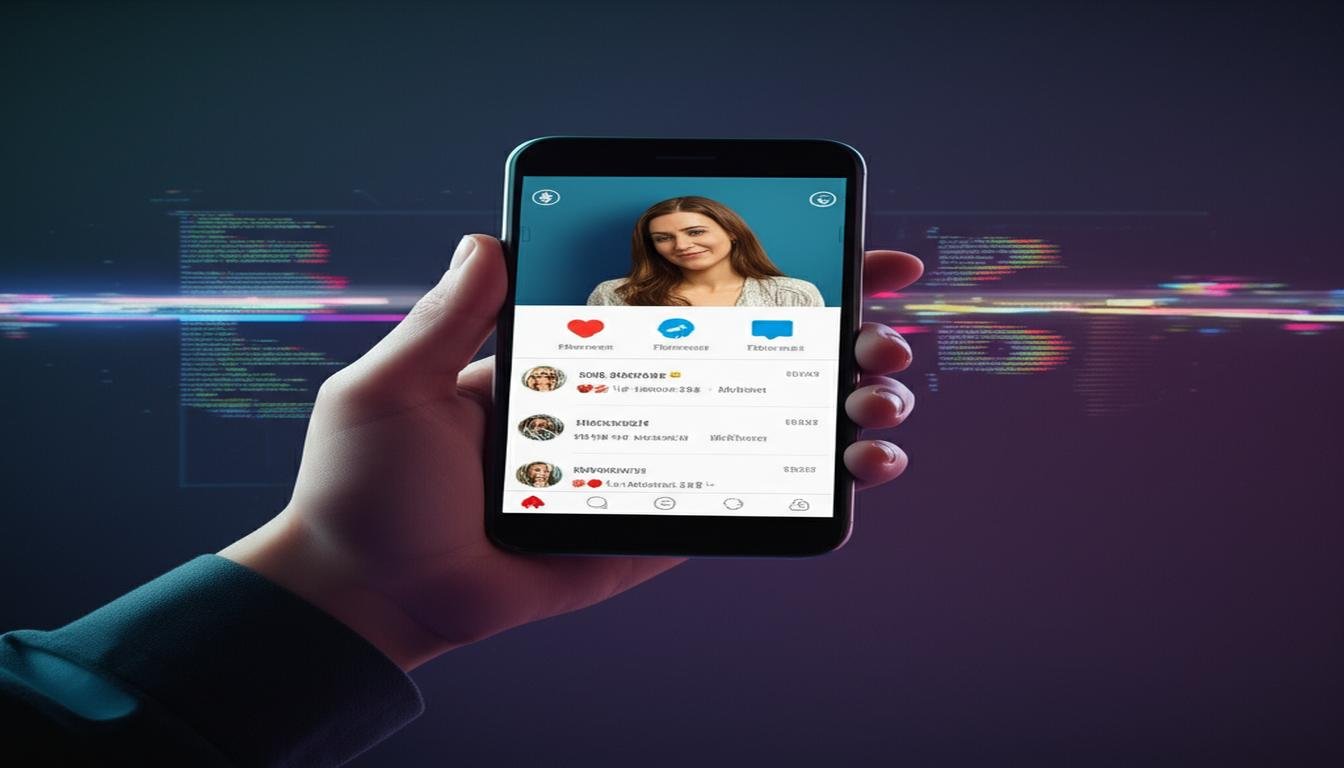Did you know that the idea of machines thinking like humans started over 70 years before smartphones? The story of artificial intelligence began in classrooms, not tech labs. Visionaries like Alan Turing wondered, “Can machines think?” His 1950 paper, the Turing Test, is a key test for machine smarts today.
But, do you know when was AI invented?
In 1956, scientists at the Dartmouth Conference created the term “artificial intelligence.” This moment marked the creation date of AI as we know it. It set the stage for many breakthroughs in the field.
Today, AI is used in ways that even the pioneers couldn’t imagine. It includes natural language processing and predictive analytics. This shows how AI has grown from its roots in the 20th century.
Table of Contents
Key Takeaways
- Alan Turing’s 1950 work laid the foundation for evaluating machine intelligence
- The term “artificial intelligence” was formally established in 1956
- Early theoretical concepts directly influence modern machine learning systems
- AI development spans multiple technological eras and breakthroughs
- Current applications at institutions like LLNL showcase the field’s evolution
When Was AI Invented: Early Foundations of Machine Intelligence
The idea of artificial intelligence has been around for thousands of years. It started in ancient myths and medieval legends, long before computers were invented. Our desire to make machines that seem alive has lasted over 2,400 years. It shows how deep our questions about life and creation are.
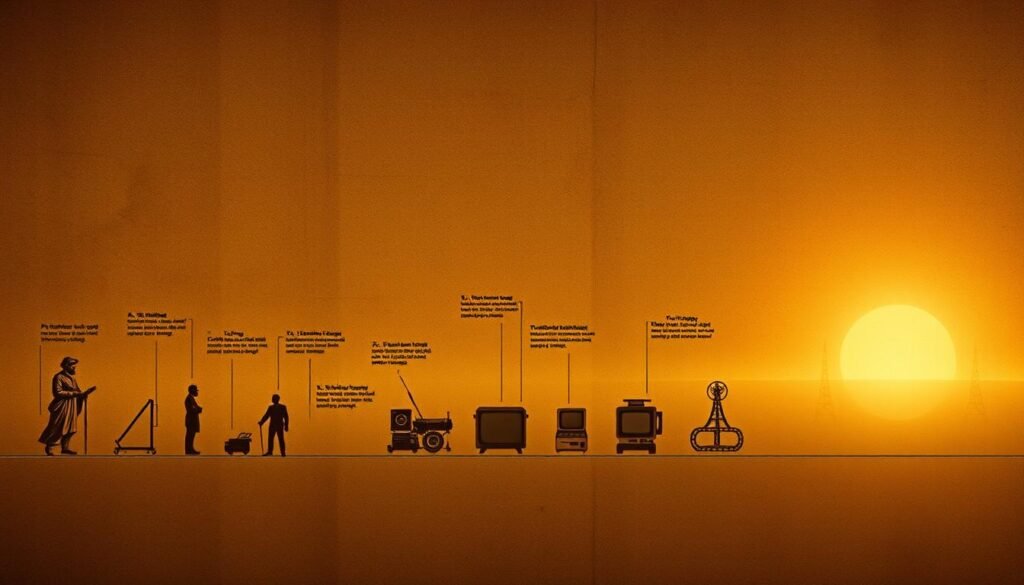
Philosophical Roots of Artificial Thought
In ancient Greece, around 400 BCE, people imagined Talos, a bronze robot guarding Crete. Later, Jewish stories told of the golem, a clay creature brought to life by magic. The Talmud says:
When righteous men desired to create a world, they were permitted to do so
These tales gave us three important ideas about artificial beings:
- Mechanical bodies needing outside help to work
- Rules that guide their actions (like the golem’s magic words)
- Concerns about who should be responsible for creating them
In the 16th century, alchemists like Paracelsus tried to make tiny humans in labs. Their work, though flawed, showed early efforts to understand how to create life.
When Was AI First Conceptualized?
The idea of AI really took off in the 20th century. Alan Turing’s 1950 paper changed how we think about AI. He asked if machines can seem to think, not if they truly do.
Turing’s famous test imagined a Victorian game. In it, people try to tell if they’re talking to a human or a machine by typing back and forth.
This approach set the stage for AI. It focused on:
- How machines act, not if they’re alive
- Testing machines in practical ways
- Using symbols and logic to make decisions
Turing’s work laid the groundwork for artificial intelligence techniques we use today. He turned big questions into real problems that scientists could solve. This is what we call AI (short for Artificial Intelligence).
Also Read: Basics of Artificial Intelligence: Exploring the Fundamentals
The Official Birth of AI

In 1956, a historic meeting marked the start of AI. John McCarthy, a computer scientist, organized the Dartmouth Summer Research Project. He brought together pioneers like Marvin Minsky and Claude Shannon. This eight-week workshop achieved three key milestones:
- Coined the term “artificial intelligence”
- Defined four core objectives for AI research
- Produced the first working AI programs
The team set ambitious goals that guide AI development today. They aimed to create machines that could:
- Use human language effectively
- Form abstract concepts
- Solve problems reserved for humans
- Improve their own capabilities
Newell and Simon’s Logic Theorist was a highlight at Dartmouth. This program could prove mathematical theorems – 38 out of 52 in Principia Mathematica. It showed machines could reason, not just calculate. Herbert Simon boldly said:
Machines will be capable, within twenty years, of doing any work a man can do.
Practical uses of AI came fast. Arthur Samuel’s checkers program learned through self-play, beating human champions by 1962. The 1961 SAINT system solved calculus problems at MIT, showing AI’s educational value. These breakthroughs raised hopes, but soon, the complexity of human intelligence became clear.
McCarthy’s definition of AI – “the science and engineering of making intelligent machines” – is key. Early predictions were too optimistic, but the Dartmouth workshop laid the groundwork for artificial intelligence history. Modern AI, from language processing to machine learning, builds on those 1956 foundations.
History of Artificial Intelligence
The journey of artificial intelligence is like a wild ride in the tech world. It’s filled with exciting breakthroughs and unexpected setbacks. Let’s explore the artificial intelligence timeline, starting with a major hurdle: the 1970s funding crisis known as the “AI winter.”
In 1973, British mathematician James Lighthill gave a harsh review. His report said AI couldn’t tackle real-world challenges, likening it to “playing chess in a tornado.” This led to a sudden drop in funding, halting progress for years.
The 1980s saw a revival with expert systems. These early AI programs mimicked human decision-making. They helped doctors and engineers, saving millions for companies like Digital Equipment Corporation. This showed the real-world value of ai technology.
But, the 1990s brought new challenges. Computers couldn’t handle complex data, slowing things down again. The 2010s changed everything with three key advancements:
- Affordable high-performance computing
- Massive datasets from the internet
- Breakthroughs in neural network design
Modern AI uses a layered learning approach. Imagine teaching a computer to recognize cats from thousands of photos. Each layer learns something new, from edges to whiskers. This layered learning is behind tools like ChatGPT.
Today’s ai revolution is powered by transformer architectures. These systems can process entire sentences at once. When OpenAI launched ChatGPT in 2022, it showed how far we’ve come. Now, we’re wondering how fast we’ll adapt to AI’s growing abilities.
Who Came up with Artificial Intelligence
Artificial intelligence is our team effort to make technology think like us. John McCarthy first used the term “AI” in 1956. But, making AI took many years of working together.
Alan Turing started with a 1950 paper on machine smarts. Marvin Minsky at MIT worked on neural networks, showing machines can learn. This laid the groundwork for AI.
Today, AI comes from many fields working together. IBM’s Deep Blue beating Garry Kasparov in 1997 showed AI’s power. Now, teams like the Data Science Institute at Lawrence Livermore National Laboratory keep pushing AI forward.
The question “who discovered AI” is complex. It grew from old debates to new tech solutions. It combines math, brain science, and computer science.
McCarthy’s Dartmouth workshop set the stage, but today’s AI is a global effort. It tackles big challenges like new AI models.
AI’s history is a mix of individual breakthroughs and teamwork. From Turing’s ideas to ChatGPT’s language skills, each step builds on the last. AI tools show our shared creativity and progress.
FAQ
When was artificial intelligence officially invented?
Artificial intelligence was officially recognized in 1956. This was when John McCarthy organized the Dartmouth Summer Research Project. Alan Turing’s work in 1950 laid the groundwork, but McCarthy coined the term and set its research goals.
Who invented AI technology?
AI wasn’t invented by one person. John McCarthy named and defined the field, building on Alan Turing’s ideas. Marvin Minsky, Allen Newell, Herbert Simon, and Arthur Samuel also made key contributions. Today, AI combines their work with advancements from IBM and OpenAI.
What was the first AI concept in history?
The Turing Test in 1950 introduced the first measurable AI concept. It proposed that machines could show intelligence by talking like humans. But, ancient myths like the Greek automaton and Jewish golem show early attempts to create intelligent beings.
How does early AI differ from modern systems?
Early AI used symbolic logic and rules, like SAINT in 1961. Modern AI, like ChatGPT, uses machine learning and neural networks. This change is like moving from teaching computers to letting them learn on their own.
Why did AI development face “winters”?
The first AI winter in 1974-80 was due to slow progress, as noted by James Lighthill in 1973. This led to a focus on practical systems in the 1980s. Today, AI avoids winters with commercial uses like GPT-4, which processes huge amounts of text data.
What defines “true” artificial intelligence?
McCarthy defined AI in 1955 as making machines act intelligently like humans. Today, AI is judged by its ability to process language, see, and learn. True AI is a moving target as its capabilities grow.
When did AI start impacting daily life?
AI started impacting life gradually:
– 1961: SAINT solved calculus
– 1997: IBM Deep Blue beat chess champion Garry Kasparov
– 2020s: AI like GPT-4 powers tools from search engines to diagnostics
The 2022 ChatGPT launch marked a big step forward.
How did ancient ideas influence modern AI?
Ancient myths like Greek automata inspired early attempts at mechanical computation. Medieval scholars like Ramon Llull developed early algorithms. These ideas merged with 20th-century theories like Shannon’s information theory and Turing’s models to create today’s AI.

